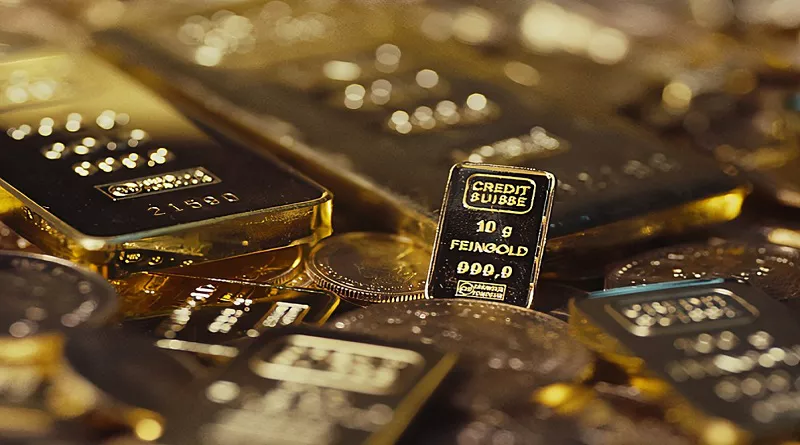In an era marked by growing concerns about climate change and its potential impact on global economies, investors are increasingly turning to safe-haven assets to protect their wealth from environmental and economic risks. Among these assets, gold has emerged as a timeless and reliable option. In this article, we will explore the relationship between gold and climate change, examining the factors driving interest in gold as a safe-haven asset and the considerations for investors navigating this evolving landscape.
1. The Appeal of Gold in Uncertain Times:
Gold has long been regarded as a safe-haven asset, sought after in times of economic and geopolitical uncertainty. Its appeal lies in its status as a store of value that is not tied to any particular government or currency. In times of crisis, investors often turn to gold as a hedge against inflation, currency devaluation, and market volatility. The unique combination of scarcity, durability, and intrinsic value makes gold a resilient asset that has stood the test of time.
2. Climate Change as a Catalyst for Interest in Gold:
The increasing recognition of climate change as a systemic risk has led investors to reevaluate their portfolios. The potential economic impacts of extreme weather events, rising sea levels, and shifts in agricultural patterns are driving a need for assets that can provide stability in uncertain times. Gold, with its history of retaining value during crises, is gaining attention as a strategic asset for investors looking to mitigate climate-related risks.
3. Diversification and Portfolio Resilience:
Climate change introduces a new dimension to traditional investment strategies, prompting investors to reassess the resilience of their portfolios. Diversification is a key consideration, and gold offers an attractive option to balance portfolios exposed to climate-sensitive industries. By including gold, investors aim to create a more robust and diversified portfolio that can weather the storms of economic and environmental challenges.
4. Gold’s Performance During Economic Disruptions:
Historically, gold has demonstrated its ability to maintain or increase in value during economic disruptions. In periods of financial crisis, gold prices have often risen as investors seek refuge from market turbulence. This historical resilience makes gold an appealing asset for those concerned about the potential economic impacts of climate change, including disruptions to supply chains, resource scarcity, and shifts in consumer behavior.
5. Considerations for Investors:
Investors looking to incorporate gold into their portfolios in response to climate change considerations should consider the following:
Risk Assessment: Evaluate climate-related risks that may impact your investment portfolio, such as exposure to industries vulnerable to climate change effects. Assess how gold can act as a hedge against these risks.
Long-Term Perspective: Gold is often viewed as a long-term investment, and its value can fluctuate in the short term. Investors should approach gold as part of a diversified, long-term strategy rather than seeking short-term gains.
Market Dynamics: Understand the dynamics of the gold market, including factors influencing its price such as interest rates, inflation expectations, and global economic conditions. Stay informed about shifts in market sentiment that may impact gold prices.
6. FAQs on Gold and Climate Change:
Q1: How does climate change impact the global economy?
A1: Climate change can impact the global economy through various channels, including extreme weather events, changes in agricultural productivity, rising sea levels affecting coastal regions, and disruptions to supply chains. These factors can lead to economic losses and increased financial risks.
Q2: Can gold be affected by climate change directly?
A2: Gold itself is not directly affected by climate change. However, the economic and environmental consequences of climate change can influence investor behavior and market dynamics, potentially impacting the price of gold as a safe-haven asset.
Q3: Are there specific gold investments focused on climate change initiatives?
A3: While there are no specific gold investments exclusively tied to climate change initiatives, investors interested in sustainable and responsible investing may consider gold mining companies with environmentally conscious practices. Additionally, some funds incorporate environmental, social, and governance (ESG) criteria in their selection of gold-related investments.
Q4: How can gold contribute to a diversified portfolio in the context of climate change?
A4: Gold can contribute to a diversified portfolio by acting as a hedge against climate-related economic risks. Its historical performance during times of crisis and low correlation with traditional assets make it a potential stabilizing force in a portfolio exposed to climate-sensitive industries.
Q5: Is investing in gold a strategy for mitigating climate change impacts?
A5: Investing in gold is not a direct strategy for mitigating climate change impacts. However, incorporating gold into a diversified portfolio can be a strategy for managing the financial risks associated with climate change, providing a hedge against economic disruptions resulting from climate-related events.

